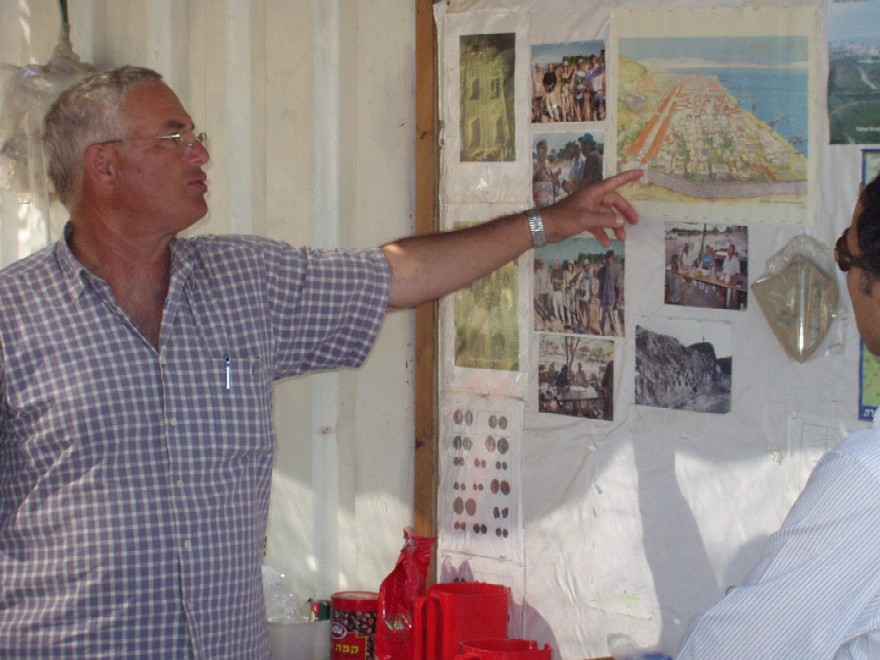Yizhar Hirschfeld on:
[Wikipedia]
[Google]
[Amazon]
 Yizhar Hirschfeld (; 1950 – 16 November 2006) was an Israeli
Yizhar Hirschfeld (; 1950 – 16 November 2006) was an Israeli
Ein Gedi 1998
Articles from '' Liber Annuus'':
The Monastery of Chariton. Survey and ExcavationsPlates
Qumran in the Second Temple Period. Reassessing the Archaeological EvidencePlates
En-Gedi: “A Very Large Village of Jews”Plates
Steven Bowman. Review. H-Judaic, H-Net Reviews. June 2005
Jodi Magness. Review
an
 Yizhar Hirschfeld (; 1950 – 16 November 2006) was an Israeli
Yizhar Hirschfeld (; 1950 – 16 November 2006) was an Israeli archaeologist
Archaeology or archeology is the study of human activity through the recovery and analysis of material culture. The archaeological record consists of Artifact (archaeology), artifacts, architecture, biofact (archaeology), biofacts or ecofacts, ...
studying Greco-Roman and Byzantine archaeology. He was an associate professor at the Hebrew University of Jerusalem
The Hebrew University of Jerusalem (HUJI; ) is an Israeli public university, public research university based in Jerusalem. Co-founded by Albert Einstein and Chaim Weizmann in July 1918, the public university officially opened on 1 April 1925. ...
and director of excavations at a number of sites around Israel, including Ramat Hanadiv, Tiberias
Tiberias ( ; , ; ) is a city on the western shore of the Sea of Galilee in northern Israel. A major Jewish center during Late Antiquity, it has been considered since the 16th century one of Judaism's Four Holy Cities, along with Jerusalem, Heb ...
, and Khirbet ed-Deir. He also published a book on the archaeology of Qumran
Qumran (; ; ') is an archaeological site in the West Bank managed by Israel's Qumran National Park. It is located on a dry marl plateau about from the northwestern shore of the Dead Sea, about south of the historic city of Jericho, and adjac ...
in which he proposed an assessment of the site that was contrary to prevailing views.
Professor Hirschfeld was born at Kibbutz Beth Keshet in Israel in 1950. He was already working on an excavation site in 1974 at Emmaus where he acted as excavation and survey director. From 1984 to 1987 he directed digs at Ramat HaNadiv. He received his doctorate at the Hebrew University Institute of Archaeology in 1987 and the following year he was awarded a Rothschild fellowship. He returned to Ramat Hanadiv in 1989, the year he also started work on excavations at Tiberias. In 1998, he was appointed as associate professor at the Hebrew University.
From 1996–2002 Hirschfeld directed excavations at a site on a terrace overlooking Ein Gedi
Ein Gedi (, ), also spelled En Gedi, meaning "Spring (hydrology), spring of the goat, kid", is an oasis, an Archaeological site, archeological site and a nature reserve in Israel, located west of the Dead Sea, near Masada and the Qumran Caves. ...
, which consisted of a series of small dwellings. His analysis led him to conclude that " l features of the site—its location above Ein Gedi, simplicity, and unique nature—conform to Pliny the Elder
Gaius Plinius Secundus (AD 23/24 79), known in English as Pliny the Elder ( ), was a Roman Empire, Roman author, Natural history, naturalist, and naval and army commander of the early Roman Empire, and a friend of the Roman emperor, emperor Vesp ...
's (d. 79 A.D.) famous passage on the Essenes
The Essenes (; Hebrew: , ''ʾĪssīyīm''; Greek: Ἐσσηνοί, Ἐσσαῖοι, or Ὀσσαῖοι, ''Essenoi, Essaioi, Ossaioi'') or Essenians were a mystic Jewish sect during the Second Temple period that flourished from the 2nd cent ...
". His proposal on the site (compare Aharoni 1958 BIES) has found little acceptance among archaeologists.
The experience he gained working on Greco-Roman period rural settlements gave him the background to write his controversial book ''Qumran In Context'' (2004), in which he concluded on morphological grounds that Qumran was "a Judean manor house" p. 226 (and thus not the home of Essenes).
Hirschfeld on the internet
Ein Gedi 1998
Articles from '' Liber Annuus'':
The Monastery of Chariton. Survey and Excavations
Qumran in the Second Temple Period. Reassessing the Archaeological Evidence
En-Gedi: “A Very Large Village of Jews”
Qumran in Context
Steven Bowman. Review. H-Judaic, H-Net Reviews. June 2005
Jodi Magness. Review
an
References
{{DEFAULTSORT:Hirschfeld, Yizhar Academic staff of the Hebrew University of Jerusalem Qumran 1950 births 2006 deaths 20th-century Israeli archaeologists